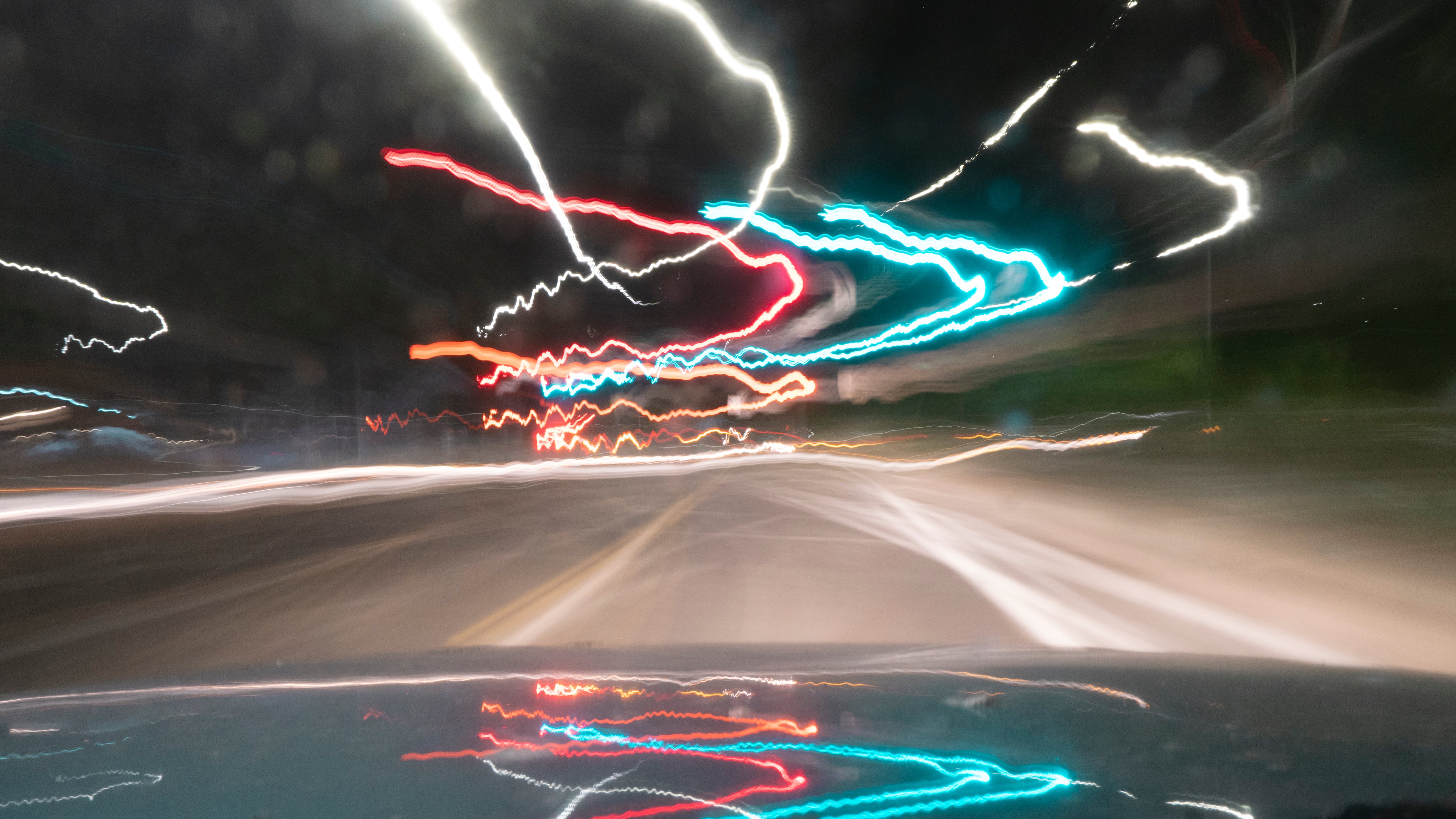A street “sliding” event at the intersection of Northeast Martin Luther King Jr. and Columbia boulevards drew a crowd of hundreds on Aug. 1, part of a youthful ritual that shuts down several streets each Sunday night as local businesses plead with City Hall to put a stop to the screaming tires.
Sliding—a term that participants say is distinct from car racing—is when drivers accelerate and steer their vehicles into tight circles, the cars often looking dangerously close to flipping or spinning out of control. Sometimes, only one car is spinning circles. Other times, there are four.
On Sunday, the crowd of hundreds formed a circle blocking all four streets at the intersection and creating an arena for the sliders to ride around. This reporter walked inside the circle, drawn by the noise that could be heard for blocks. She found a charged environment filled with adrenaline, angst, joy and a bit of danger.
Sports cars—some beaten down, others spiffy with rims and fresh paint—spun circles within the protective circle created by spectators. Gas fumes and the sounds of cheering spectators, screeching tires and revving engines filled the night with equal parts urgency, party, rebellion and danger.
The crowd consisted of young people: teenagers, mostly. About three-quarters of the spectators and racers were people of color, mostly Black and Latinx.
The event began around 9 pm and continued until past midnight.
Gas fumes clouded the sky and the smell of burnt rubber filled the air. At least 400 spectators looked on. Lines of cars backed up a quarter to a half-mile down all four streets waited for hours. Some spectators launched fireworks.
The event felt like controlled chaos. A natural rhythm became apparent throughout the night: One to four cars would enter the circle from one of the four streets, emerging behind spectators who would jump out of the way as the engines revved. They would enter the circle, making impossibly dangerous angles with their cars as they spun around, leaving a wake of fumes, sparking tires and cheers with every turn. The crowd would egg them on, yelling, shouting, making hand gestures, sometimes chasing them for short spurts.
Cars would cycle in and out every three or four minutes, another car always waiting in the wings to take its place. Sometimes cars would exit the circle at will; other times, their wheels were so stressed, overheated and eroded that bare metal was grinding along the road.
Small crews of mostly young men on each of the four roads prepped and repaired cars to enter the crowd. They’d jack up cars to replace tires, moving swiftly amid the noise. They often spoke quietly to each other, seamlessly navigating around each other to prep the cars.
There was a distinct and peculiar rhythm to the event—and everyone seemed familiar with it.
Sometimes, only a driver was in the car, often expressionless, focused on the turns. Other times, someone in the passenger’s seat dangled half their body outside the car, holding their camera out and yelling to capture the scene.
The cars would barely miss each other, close calls happening every one or two minutes. A rotating selection of teens clustered in the center of the intersection, forming a small crew that the cars would dangerously spin around, sometimes just barely missing the kids who would slap the cars, cheer them on and pump their fists, yelling. Kids would sprint into the circle, stay awhile, then sprint back out.
At one point during the event, a red car’s tire burst close to the crowd, spewing chunks of hot rubber into the crowd and street. The driver of the car, completely unfazed, smoothly backed it into the curb and crowd. The passenger—a white man with tattoos and a red shirt—hopped out and jacked up the rear of the car, and another, younger kid came out from seemingly nowhere, rolling a brand new tire with him.
The event, WW learned through various social media accounts, was held as a memorial for a fellow racer who was shot and killed in October 2020 in Portland. His name was Noah Terry.
Bystanders told WW the event has happened every Sunday for months now.
For at least as long, a coalition of nearby businesses has appealed to City Hall for a crackdown.
On July 19, the North Portland Coalition for Safe Streets, a group of businesses affected by the events in industrial North Portland, often along Marine Drive and Columbia Boulevard, penned a letter to the mayor and city commissioners decrying the events.
It’s the group’s third plea for City Hall to take action against the street sliding events. Businesses in the coalition include Columbia Sportswear, BNSF Railway, the Port of Portland, Subaru of America and Ajinomoto Foods North America.
“Since we last wrote to you and spoke with your representatives, people have died. The practice of street racing in our neighborhoods on city streets continue unabated without any compliance or enforcement,” the letter read. “Scheduled events are actively and unabashedly advertised on social media. We are concerned for the safety of our employees. They are afraid to come to work. They are threatened and harassed and put into dangerous situations just so they can provide for their families.”
The mention of a death refers to a deadly crash during a racing event on April 19, when a motorcyclist was struck and killed in the 6200 block of Marine Drive in North Portland. The driver of the other vehicle was cited for reckless driving.
“We understand there is work underway to address the matter through changes to city code. We fully support whatever you can do to enable the Portland Police Bureau to safely control the streets and protect the citizens they swear by oath to serve,” the letter read.
Mayoral aide Sam Adams tells WW that city officials have drafted an ordinance that would “increase the sanctions for this kind of dangerous driving on public streets.”
“Large unpermitted street racing events involving high speed and at times pedestrian onlookers have grown in number and size across the city,” Adams says. “We have a draft of an ordinance in front of the City Council for them to comment on. We want to have it at the City Council when folks come back from their time off.”
Lt. Greg Pashley, a spokesperson for the Portland Police Bureau, tells WW that “police did not [report] directly to that intersection, but did respond nearby so supervisors could assess.”
Pashley added that no arrests were made.
On Sunday night, one young couple, who seemed familiar with the events, asked another couple—who looked out of place in their 30s—“Right place at the right time?”
“Yep,” the older couple said. “Do the cops ever do anything?”
“Nope,” replied the young girl.

